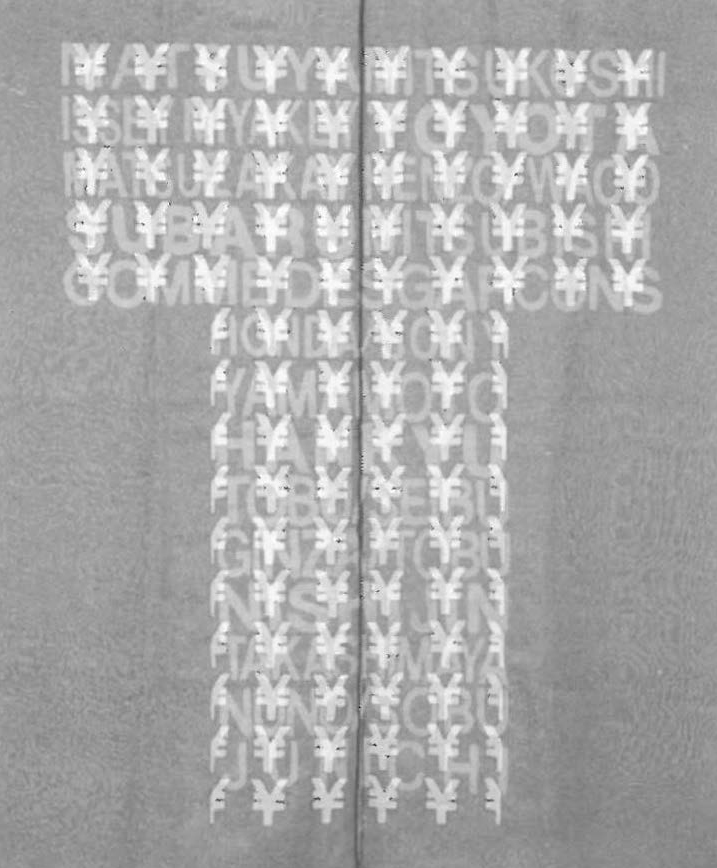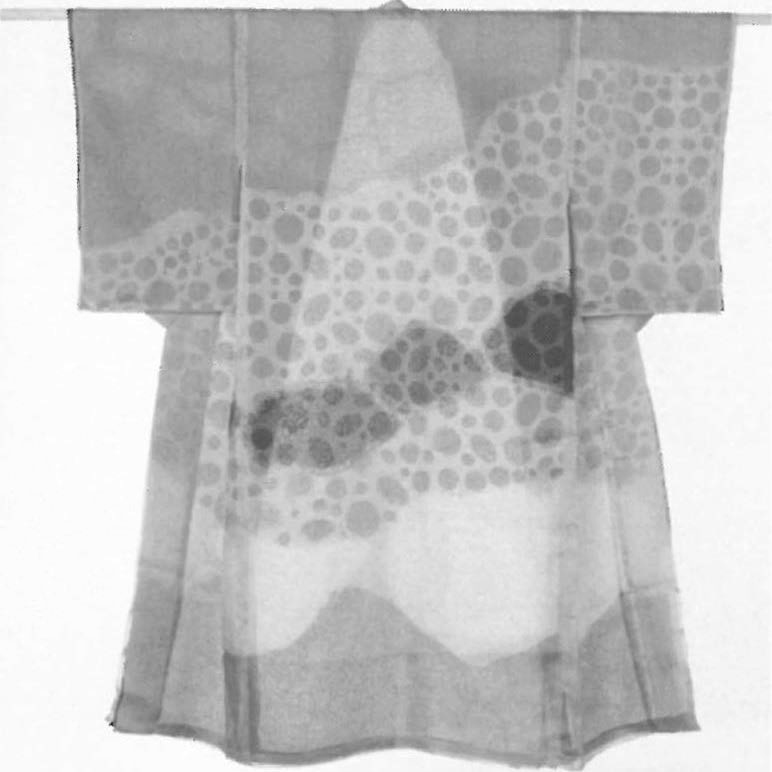
Needless to say the exhibition Kimono as Canvas has nothing to do with canvas. Beautifully crafted and dyed textiles, constructed in the T-shape of the traditional Japanese kimono, floated in the breeze that wafted through the gallery. In fact, the breeze played a significant role in the subtle transformation of some of the fabrics. Shifting veils of patterns and textures produced those optical moire effects which can be highly suggestive of wind blowing across water. Canvas cannot float or flutter at the whim of a breeze, nor does its fibre lend itself to subtle manipulation.
In this exhibition, the term 'canvas' is used as a conceptual device for exploring ways of manipulating fibre and textile using the kimono form as the basic structure - much in the way the traditional kimono was used to display the various skills employed in their design and making. The thirteen contemporary fibre and textile artists chosen by the directors of Gallery East are well known for their creative skills in these mediums. To celebrate the kimono form, these artists were commissioned to create a 'kimono' as part of the 2000 Perth International Arts Festival.
Ten of the artists come from Australia and three from Japan. Each produced a single work for the exhibition which was accompanied by a collection of traditional Japanese woodblock prints of courtesans, lovers and actors wearing kimonos. The prints are part of the Gallery East collection, and will be touring with the show with most available for purchase. Five of the artists are from Western Australia - Margaret Ainscow, Moira Doropoulos, Anne Farren, Wendy Lugg and Janie Matthews; four from NSW - Patricia Black, Vivien Haley, Barbara Rogers and Liz Williams; one from the ACT - Keiko Amenomori Schmeisser; and three from Japan - Keiko Kanesaki, Hiroyuki Shindo and Koji Takaki.

The kimonos range from the subtle, highly wearable Ra-Summer Kimono by Hiroyuki Shindo to the flamboyant Opulence kimono by Anne Farren which features gold leaf and foil. Shindo is head of Textiles at the Kyoto School of Art, and is an internationally known installation artist who uses indigo-dyed fibres in his constructions, hence his other name Shindigo. In Summer Kimono, Shindo uses shibori (tied-dyed) silk woven to create a floating diaphanous garment. The garment appears, and no doubt feels, cool and sensuous. Curiously for an acknowledged avant-garde artist, Shindo's work was the most traditional and understated of the kimonos.
Indigo dye and panels of transparent silk organza are used to explore the realm of memory in the work of Moira Doropoulos. Titled Memorial to Memoirs, this beautiful piece with its water-stained surfaces has figures and Greek lettering ghosting through the layers in a muted, understated way, aptly capturing the fugitive nature of memory and the past.
Letters and symbols are also used in Margaret Ainscow's Yin-Yen, but here irony is at play. Multiples of the Yen symbol are appliqued onto the front panel of grey silk organza in a broad T-shape pattern. On the rear panel of white, in the same formation, are large appliqued letters naming major Japanese corporations. The message about links between consumerism and culture is not so overt as to distract the viewer from the work's elegance.
Two fabulous kimonos are Barbara Rogers' Healing Waters and Vivien Haley's Bush Orchid and Pike. These exquisitely constructed works capture the essence of the Japanese love of nature and design which is central to their aesthetic. The various layers of printed silk in Healing Waters create illusions of depth and stillness. Illusion is also found in Janie Matthews' Meditations and Reflections where water currents appear to surge across the various fabrics with their diverse treatments. The illusion is assisted by the effects of air movement and the lavender-hued shadow play on the wall behind.
Striking a different and very contemporary note is Keiko Kanesaki's homage to the Winter Olympic Games at Nagano. Bold stencil prints and resist dyes on linen depict images of ski stocks and hockey sticks (bearing Keiko's name), the Olympic rings, geometric blocks of colour and stylised fields of flowers. This work is unusual for the symmetry of its patterns as the Japanese usually favour asymmetry.
Kimono as Canvas is an exhibition which offers depth for the mind and joy to the eye.












